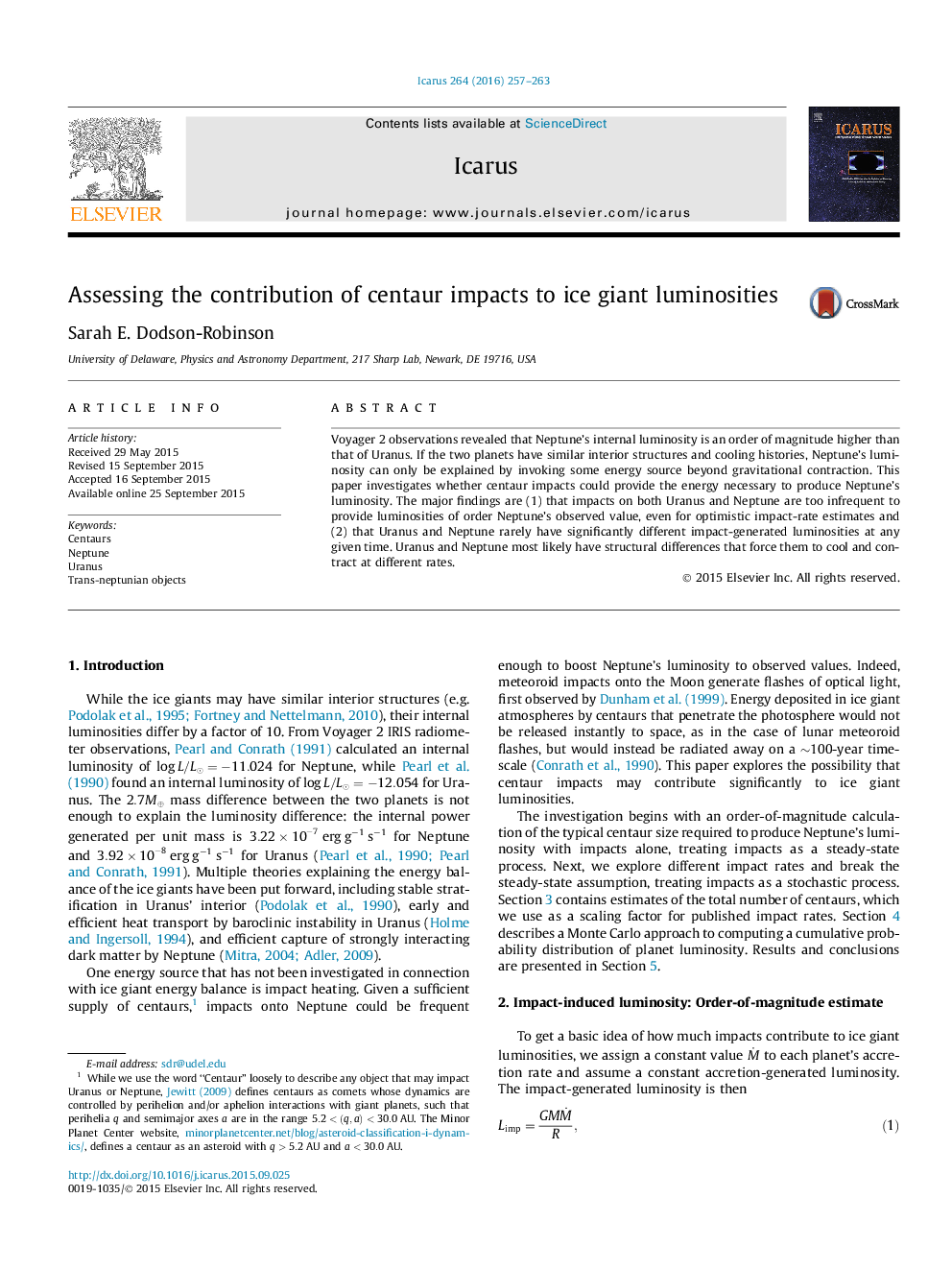| Article ID | Journal | Published Year | Pages | File Type |
|---|---|---|---|---|
| 8135914 | Icarus | 2016 | 7 Pages |
Abstract
Voyager 2 observations revealed that Neptune's internal luminosity is an order of magnitude higher than that of Uranus. If the two planets have similar interior structures and cooling histories, Neptune's luminosity can only be explained by invoking some energy source beyond gravitational contraction. This paper investigates whether centaur impacts could provide the energy necessary to produce Neptune's luminosity. The major findings are (1) that impacts on both Uranus and Neptune are too infrequent to provide luminosities of order Neptune's observed value, even for optimistic impact-rate estimates and (2) that Uranus and Neptune rarely have significantly different impact-generated luminosities at any given time. Uranus and Neptune most likely have structural differences that force them to cool and contract at different rates.
Related Topics
Physical Sciences and Engineering
Earth and Planetary Sciences
Space and Planetary Science
Authors
Sarah E. Dodson-Robinson,
